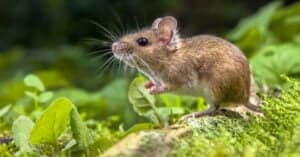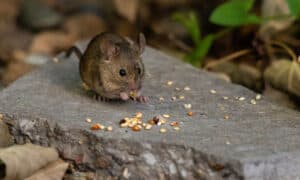It is safe to say that one hundred percent of hamsters are cute. With their adorable little ears, innocent eyes, and soft fur, they are a thousand percent cute. And they seem like the perfect pet. But there are many things you should take into consideration before bringing a hamster home.
Hamsters need a safe and quiet area. A stressed-out or anxious hamster can get really sick. Hamsters are not active during the daytime, so they aren’t the best pets for children or adults who want a pet to play with during the day. If you are a light sleeper, consider how a hamster’s activities might disturb you at night. Hamsters have very delicate bones and weigh only a few ounces, so they need expert handling and can never be squeezed or dropped.
Another important consideration is cost. A hamster costs under twenty dollars usually, but the amount of money you spend on food, cages, toys, bedding, and veterinary bills should be carefully researched. And remember that a hamster cage needs to be cleaned daily and the bedding weekly to keep your hamster healthy.
One crucial aspect of hamster health is the type and size of the enclosure. Cages that are small and made out of wire are not suitable for hamsters. A hamster runs and hunts between five and thirteen miles in the wild in one day! They need between two and five miles of exercise in captivity every day. So the bigger the cage, the better. Pens made of solid materials like glass or plastic are best. A bare minimum of 500 square inches is best, but bigger is better. Many loving hamster owners have created amazing habitats for their hamsters that take up nearly a whole extra room in their house and contain a deep substrate for digging tunnels and hours of enrichment.
Whether you keep a hamster as a pet or appreciate them in the wild, they are sure to be fun to observe. They are gentle creatures that are full of energy and a joy to watch. Here is our list of the five cutest hamsters in the world. Let’s get started!
1. Short-Haired Syrian Hamster
Syrian hamsters (Mesocricetus auratus) are also called golden hamsters. They are from the warm, arid areas of northern Syria and southern Turkey. Their name in Arabic means “mister saddlebags” because they like to store plenty of food in their cheek pouches.
Syrian hamsters get pretty big as hamsters go, up to 6 inches long and 5 ounces. Originally, they only came in golden fawn color. Modern breeders produce Syrian hamsters in brown, black, cream, white, blonde, cinnamon, gray, spotted, tortoiseshell, and many more.
Syrian hamsters are territorial and prefer to live alone, which is normal behavior for a hamster. They actually mark their burrows with special scent glands on their hips. They are most active in the twilight hours around dawn and dusk and, being temperature sensitive, do not like to come out in the heat of the day. Golden hamsters travel between two to five miles per day in search of food and need the same amount of exercise in captivity. Golden hamsters are known for being curious and intelligent. If they are kept as pets, they need mental stimulation. Also, be sure to purchase a hamster wheel that is a minimum of 12 inches in diameter, so they do not damage their spines. Syrian hamsters live an average of two to three years.
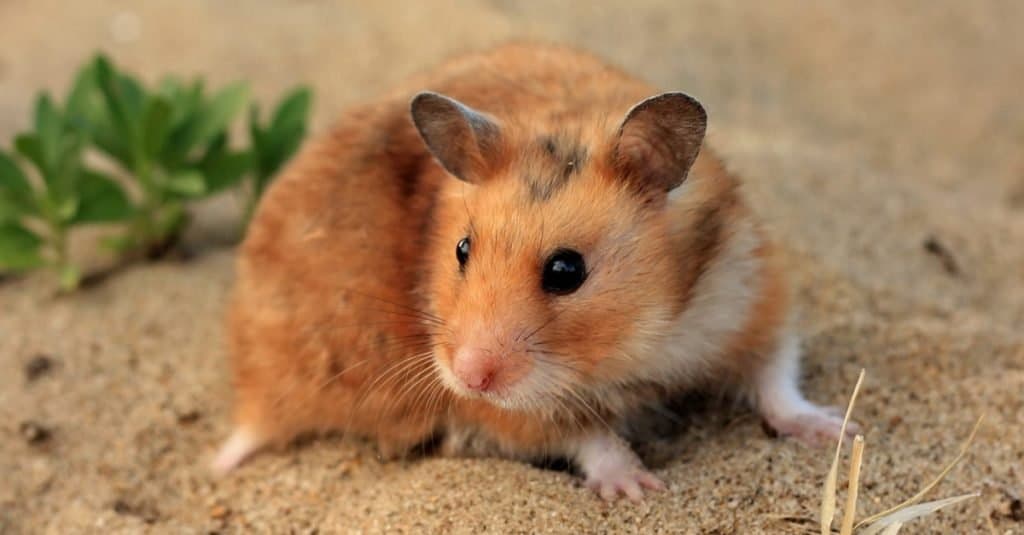
Syrian hamsters (
Mesocricetus auratus) are also called golden hamsters and grow up to 6 inches in length and 5 ounces in weight.
©Alexruss/Shutterstock.com
2. Long-Haired Syrian Hamster
Syrian hamsters (Mesocricetus auratus) with long hair are often called teddy bear hamsters. They are identical in every way to their short-haired relatives except for the length of their coats. Their hair is so long, especially on the males, that they look like they are wearing a skirt made of fur.
If you are choosing a hamster as a pet, it is recommended to keep long-haired Syrian hamsters in a cage with a solid floor rather than slats or wires, as they can injure their toes otherwise. They need an enclosure with a bare minimum of 500 square inches. But bigger is better, so choosing one as big as possible is best for the enrichment of the animal. And as with all hamsters, one pet per habitat is crucial. Remember, wild hamsters run between five and thirteen miles daily, so an exercise wheel is a must. Choose a wheel that allows your hamster to run with their backs straight and not curved to protect its delicate vertebrate.
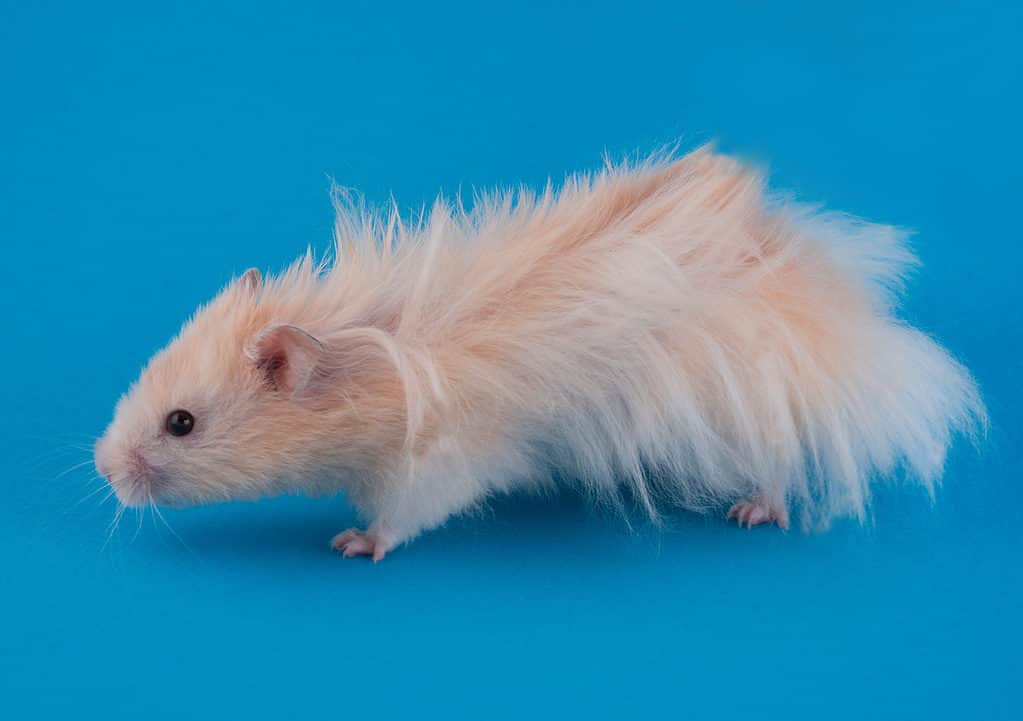
Long-haired Syrian hamsters are often called teddy bear hamsters.
©Olena Kurashova/Shutterstock.com
3. Campbell’s Dwarf Hamster
The super cute Campbell’s dwarf hamster (Phodopus campbelli) was first discovered in 1902 by Charles Campbell. They are native to central Asia and live in a complex maze of horizontal and vertical tunnels. Some of their burrows are up to three feet deep.
These gray hamsters stay small and cute their whole lives, reaching only three inches long. They have tiny, adorable ears and a grey or black stripe running down their back. Their underbelly and feet are white.
For such small hamsters, they have incredibly large cheek pouches. Their pouch extends from their cheek all the way back to their rear legs!
They love to eat various foods, including grains, nuts, seeds, fruits, greens, and vegetables. It is important that they get a balanced diet with 25 percent protein, 65 percent carbohydrate, 10 percent fat, and plenty of fresh water. Variety is the spice of life for a hamster, and a large variety of different vitamins and minerals is necessary for their health. The average lifespan of a Campbell’s dwarf is two and a half years.
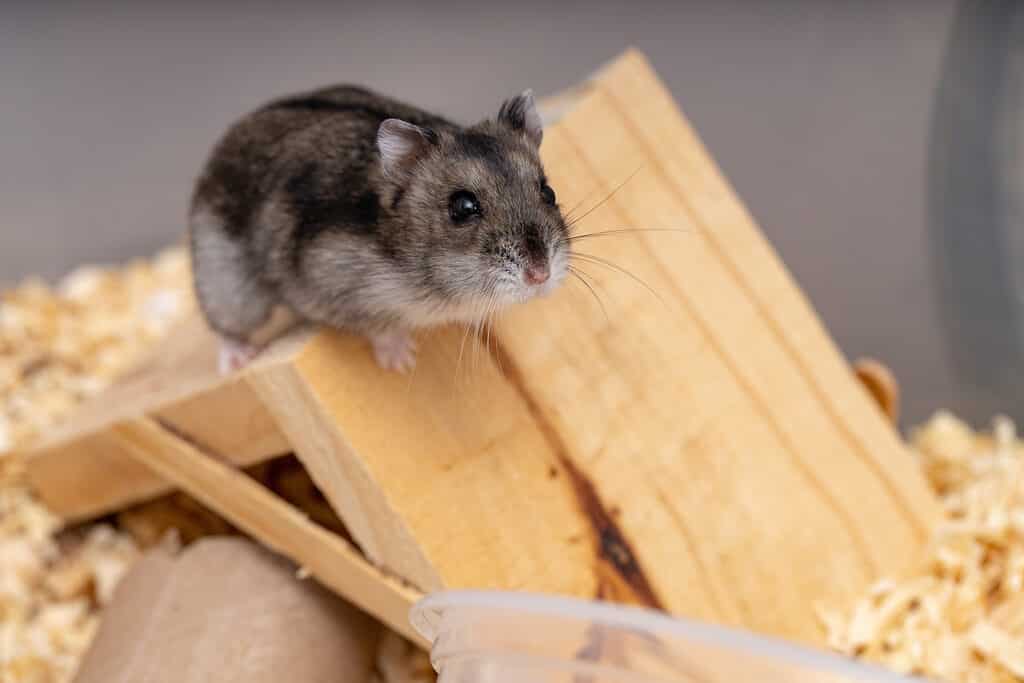
Campbell’s dwarf hamster (
Phodopus campbelli) stays small and cute their whole lives, reaching only three inches in length.
©Vinicius R. Souza/Shutterstock.com
4. Winter White Dwarf Hamster
Winter white dwarf hamsters (Phodopus sungorus) have many names. They are called Russian dwarfs, Djungarian hamsters, striped dwarfs, and Siberian hamsters. No matter what you call them, they are one of the world’s cutest hamsters, for sure!
They are round ball-shaped little creatures covered in thick gray fur. They have a black stripe down their back and furry feet. They are between 2.7 and 3.5 inches long and weigh about two ounces.
Winter white hamsters get their name because their coat turns almost entirely white in the winter! These cuties are native to Kazakhstan, Mongolia, and Siberia. Breeders have recently created many different hybrid colors of winter whites, including sapphire, sapphire pearl, and solid pearl. The average lifespan of the winter white dwarf hamster is one to three years.
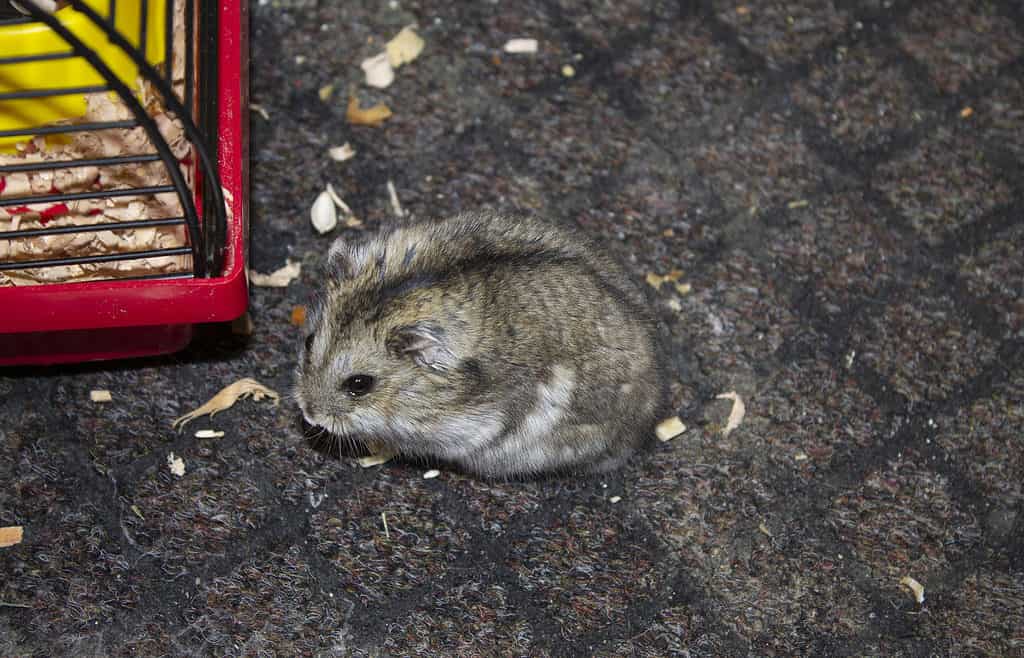
Winter white dwarf hamsters have thick gray fur, with a black stripe down their back but their coat turns almost entirely white in the winter.
©Tsesar Anna/Shutterstock.com
5. Roborovski Hamster
Roborovski hamsters (Phodopus roborovskii) also have several other names, including desert hamsters, robo dwarfs, and dwarf hamsters. They are super tiny and super cute. They reach an average size of two inches and weigh less than one ounce. They have sandy fur and the cutest white patches above their eyes. Captive breeding has created many different variations of color and markings.
Roborovski hamsters are very active and fast. If you plan to keep one as a pet, a hamster wheel and a large enclosure are necessary.
In the wild, Roborovskis live in desert areas that are mostly loose sand. They dig burrows and tunnels as far as six feet under the ground. They eat grains, vegetables, fruit, plants, meat, and insects. In captivity, they are especially fond of chasing and catching live grasshoppers. The average lifespan of a Roborovski hamster is two to three years.
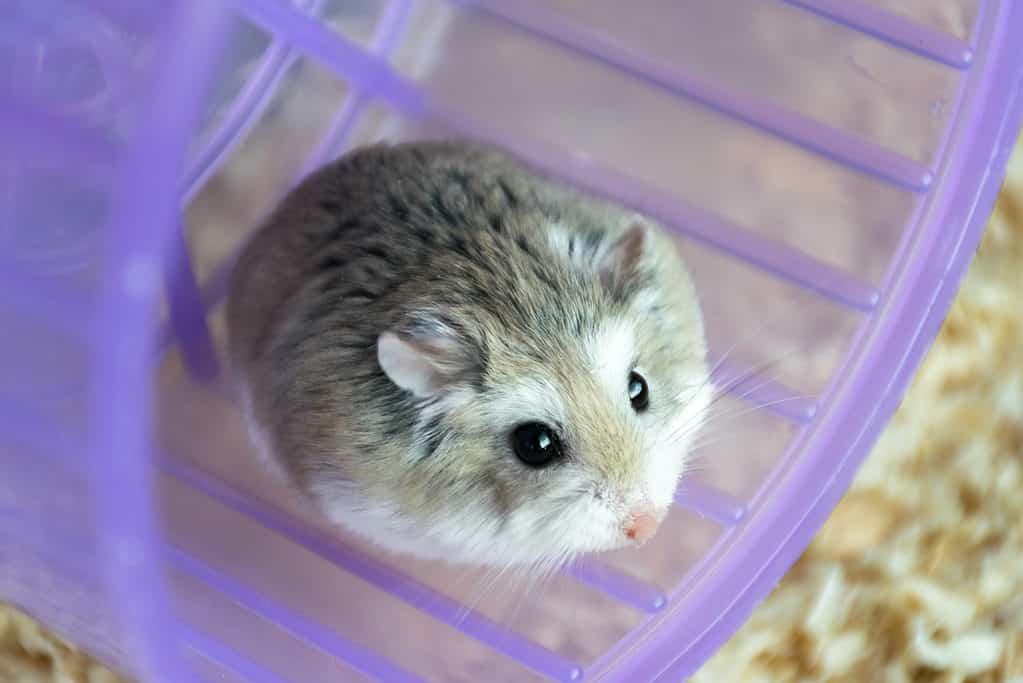
Roborovski hamsters are tiny, reaching an average size of two inches and weighing less than one ounce with white patches above their eyes.
©iStock.com/Anyarnia
10 Incredible Hamster Facts
- Hamsters are territorial and will be violent to another hamster if it comes into their home.
- Hamsters can run backward and forward at equal speeds. This design helps them escape a tunnel in either direction to avoid predators.
- Baby hamsters have a full set of teeth at birth.
- Hamster teeth continually grow. They need to chew on sticks or other objects to wear them down.
- Hamsters love to take dust baths. This helps to remove oil from their fur and keep them clean.
- Hamsters do not have very good eyesight. At birth, they are blind, and even after maturing, they can only see a few inches in front of their face.
- Hamsters have a great sense of smell. This is the first sense that they use when exploring their world.
- Hamsters can use either their front or back paws to grasp their food.
- Hamsters are only pregnant for between two and three weeks. Litter sizes vary from eight to twenty babies!
- Hamsters communicate using scent glands and body language. They also make ultrasonic sounds that humans cannot hear. In addition, they make clicking, chattering, hissing, and squeaking noises to communicate.
Here is a Summary of the 5 Cutest Hamsters in the World
- Long-Haired Syrian Hamster
- Short-Haired Syrian Hamster
- Campbell’s Dwarf Hamster
- Winter White Dwarf Hamster
- Roborovski Hamster
Up Next
- Hamster Lifespan: How Long Do Hamsters Live?
- Guinea Pig Types: The Ultimate Guide To Guinea Pig Breeds
- Pet Mice: 9 Things You Need To Know
The photo featured at the top of this post is © Anastasia Solovykh/Shutterstock.com
Sources
- Wiley Online Library, Available here: https://onlinelibrary.wiley.com/doi/abs/10.1002/jcb.240531012
- Science, Available here: https://www.science.org/doi/abs/10.1126/science.942799
- Oxford Academic, Available here: https://academic.oup.com/hmg/article-abstract/6/4/601/2901243
- APA PsycNet, Available here: https://psycnet.apa.org/record/1978-11799-001
Thank you for reading! Have some feedback for us? Contact the AZ Animals editorial team.



